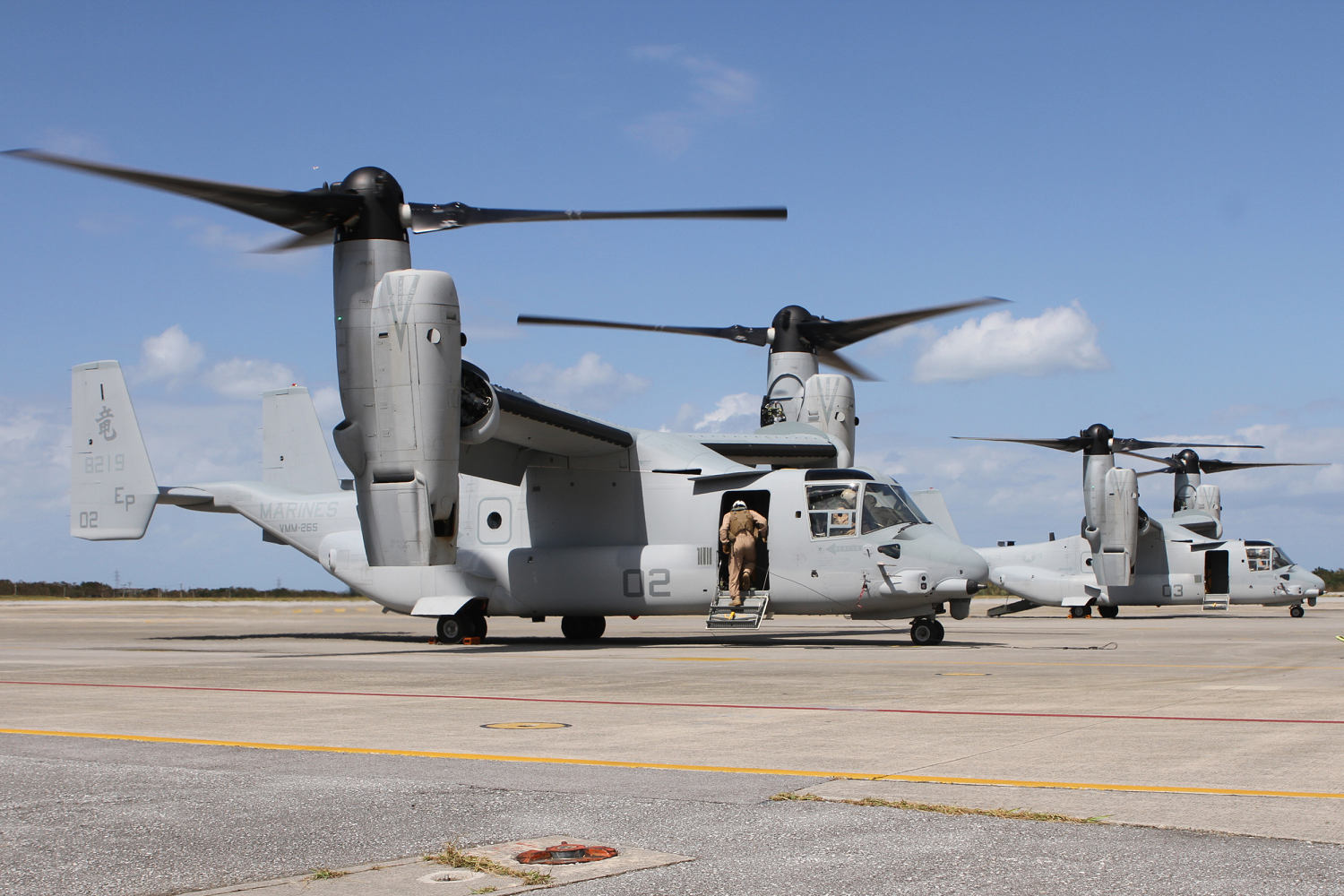U.S. and Japanese forces to resume Osprey flights in Japan amid local safety

TOMIOKA, Japan — The U.S. and Japanese militaries will resume flights of Osprey aircraft in Japan after completing necessary maintenance and training following a fatal crash in southern Japan last November, officials said Wednesday.
The Osprey aircraft, which can take off like a helicopter and then fly like an airplane, has had a troubled history, including numerous crashes.
Japan’s Defense Ministry said the two countries had discussed the resumption of Osprey flights in Japan since the U.S. Naval Air Systems Command announced last Friday that the aircraft was approved to return to service after an “unprecedented” part failure led to the deaths of eight U.S. service members in the crash in Japan.
The entire U.S. Osprey fleet was grounded Dec. 6, a week after that crash. Japan’s military also grounded all of its 14 Ospreys.
Japan’s Defense Ministry said that each of the U.S. forces will have separate return-to-flight schedules and that Japan and the United States “closely” discussed a timeline for the resumption of Osprey flights in Japan. Aircraft that have completed necessary maintenance and training will return to flight as early as Thursday, the ministry said.
It said the crash was caused by a part problem, not a faulty Osprey design, and that similar problems can be prevented in the future by taking steps to mitigate the identified cause. It did not provide further details.
The Osprey flights will be limited to areas around their bases for the time being, the ministry said, in an apparent effort to address the safety concerns of residents in Okinawa, where most of the U.S. military Ospreys in Japan are deployed. There has been vocal opposition there to the aircraft.
Okinawa is home to Marine Corps Air Station Futenma and its 24 MV-22B Ospreys, and where half of the American troops in Japan are based.
Okinawa Gov. Denny Tamaki objected to the planned return to flight operations, saying there was not sufficient explanation about the cause of the accident. He told reporters Wednesday that he was informed by Japanese defense officials about the plan, but no detailed explanation was given.
“This is absolutely unacceptable and we cannot allow this to happen,” Tamaki said.
He said he planned to ask both the Japanese government and the U.S. military to keep Ospreys on the ground until they fully disclose the cause and safety measures. Okinawa will also request scrapping of the aircraft’s deployment, he added.
In Kagoshima, where the Self-Defense Force’s Ospreys are planned for deployment, prefectural officials cited residents’ safety concerns and sought details about the cause and safety measures, but defense officials declined to share them until the U.S. military issues an investigation report, NHK public television reported.
Japanese Defense Minister Minoru Kihara said the U.S. had given an “adequate” explanation of the cause of the crash and provided detailed information about the accident.
The crash was the second fatal Osprey accident in months and the fourth in two years. Before clearing the Osprey, U.S. officials said they put increased attention on its proprotor gearbox, instituted new limitations on how it can be flown and added maintenance inspections and requirements that gave them confidence it could safely return to flight.
The officials did not identify the specific component that failed because the Air Force’s crash investigation has not been completed, but said they now have a better — but not complete — understanding of why it failed.
Read More: U.S. and Japanese forces to resume Osprey flights in Japan amid local safety

